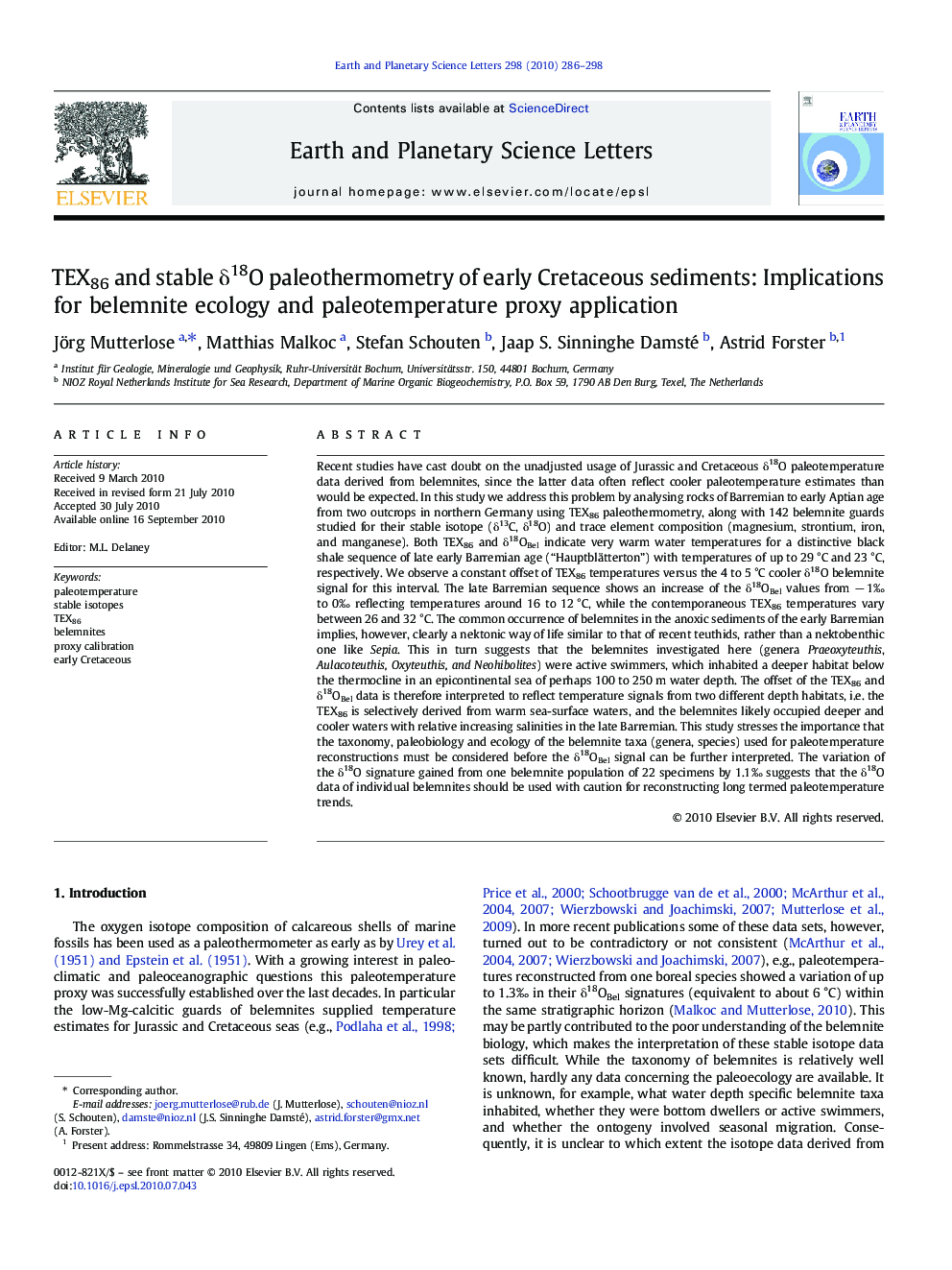| کد مقاله | کد نشریه | سال انتشار | مقاله انگلیسی | نسخه تمام متن |
|---|---|---|---|---|
| 4678405 | 1634843 | 2010 | 13 صفحه PDF | دانلود رایگان |

Recent studies have cast doubt on the unadjusted usage of Jurassic and Cretaceous δ18O paleotemperature data derived from belemnites, since the latter data often reflect cooler paleotemperature estimates than would be expected. In this study we address this problem by analysing rocks of Barremian to early Aptian age from two outcrops in northern Germany using TEX86 paleothermometry, along with 142 belemnite guards studied for their stable isotope (δ13C, δ18O) and trace element composition (magnesium, strontium, iron, and manganese). Both TEX86 and δ18OBel indicate very warm water temperatures for a distinctive black shale sequence of late early Barremian age (“Hauptblätterton”) with temperatures of up to 29 °C and 23 °C, respectively. We observe a constant offset of TEX86 temperatures versus the 4 to 5 °C cooler δ18O belemnite signal for this interval. The late Barremian sequence shows an increase of the δ18OBel values from − 1‰ to 0‰ reflecting temperatures around 16 to 12 °C, while the contemporaneous TEX86 temperatures vary between 26 and 32 °C. The common occurrence of belemnites in the anoxic sediments of the early Barremian implies, however, clearly a nektonic way of life similar to that of recent teuthids, rather than a nektobenthic one like Sepia. This in turn suggests that the belemnites investigated here (genera Praeoxyteuthis, Aulacoteuthis, Oxyteuthis, and Neohibolites) were active swimmers, which inhabited a deeper habitat below the thermocline in an epicontinental sea of perhaps 100 to 250 m water depth. The offset of the TEX86 and δ18OBel data is therefore interpreted to reflect temperature signals from two different depth habitats, i.e. the TEX86 is selectively derived from warm sea-surface waters, and the belemnites likely occupied deeper and cooler waters with relative increasing salinities in the late Barremian. This study stresses the importance that the taxonomy, paleobiology and ecology of the belemnite taxa (genera, species) used for paleotemperature reconstructions must be considered before the δ18OBel signal can be further interpreted. The variation of the δ18O signature gained from one belemnite population of 22 specimens by 1.1‰ suggests that the δ18O data of individual belemnites should be used with caution for reconstructing long termed paleotemperature trends.
Journal: Earth and Planetary Science Letters - Volume 298, Issues 3–4, 1 October 2010, Pages 286–298